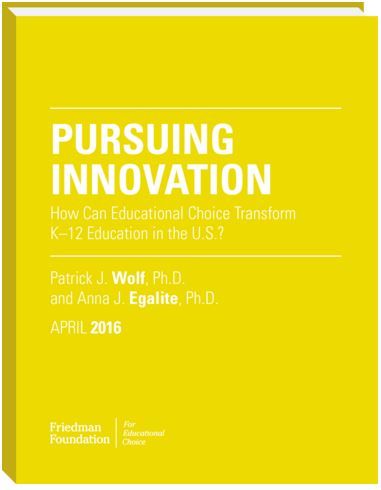 With more than 20 million children across the nation now choosing their schools, a new report from the Friedman Foundation looks at those who do not. Its conclusion: school choice is also benefiting students who stay in traditional public schools.
With more than 20 million children across the nation now choosing their schools, a new report from the Friedman Foundation looks at those who do not. Its conclusion: school choice is also benefiting students who stay in traditional public schools.
Authors Patrick Wolf of the University of Arkansas and Anna Egalite of North Carolina State University found 42 reports studying the competitive effects of charter schools, vouchers and tax-credit scholarships on district school student achievement. Florida, home to the largest private school choice program in the nation (Step Up for Students, the co-host of this blog and employer of this author, offers scholarships to 78,000 low-income students throughout the state), has been host to 10 of those studies.
Of those 42 studies, 30 found statistically significant achievement gains for one or more subgroup of students attending traditional district schools. Nine studies in Florida found positive gains for district students while one study found neutral to positive gains for district school students thanks to competition from charters.
The report contradicts arguments often advanced by choice opponents, who have asserted that the programs harm students, undermine public education and threaten America’s education ideals.
In Florida, in particular, the report says that no study has found district school students were harmed by choice programs, which directly contracts the main arguments in an ongoing adequacy lawsuit in the state.
Only two of the 42 studies found evidence that school choice might harm students remaining in district schools.
The authors say that the positive impacts on public school students remain small. “Competition from these sources also changes the operation of public schools,” conclude the authors, “but only in incremental ways…”
The available evidence from charters, vouchers and tax-credit scholarships leads the researchers to theorize about the impacts of newer choice programs such as education savings accounts (ESA) and course choice. Under ESA programs, parents can direct education dollars to a number of different services while unused money can be saved for subsequent years or invested in college savings accounts. Meanwhile, course choice allows parents and students to shop for individual course offerings from public and private providers, including online, face-to-face and hybrid instruction programs.
The authors believe the customization allowed under these innovative education reforms could provide even greater competitive pressure than charters, vouchers or tax-credit scholarships.




[…] high-quality research shows, expanding educational choice benefits both participating students and those who remain in their assigned district schools. However, legislators should avoid writing discrimination into […]